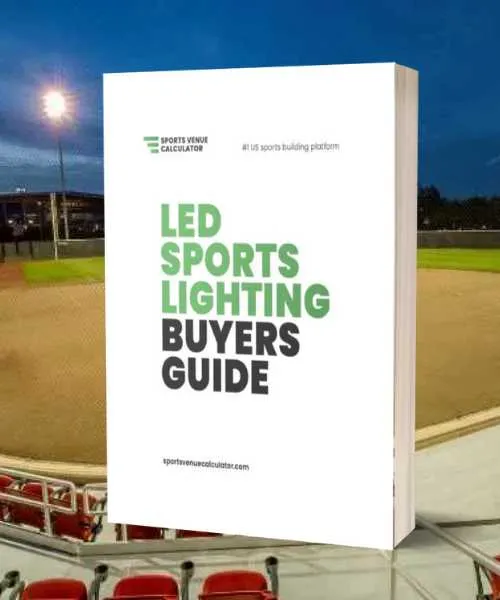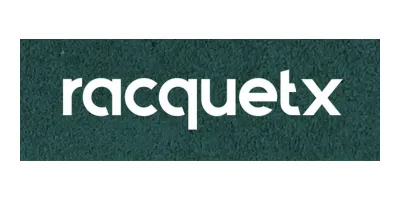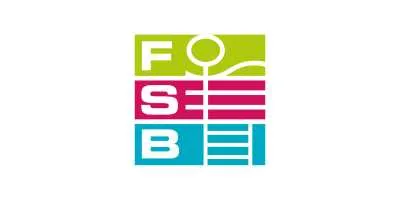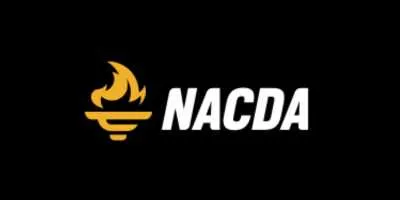Home » LED Sports Lighting » Commercial Gym & Weight Room Lighting Costs, Installation Guide, and LED Retrofit Insights (2025)

Lighting plays a crucial role in the functionality and ambiance of commercial gyms and weight rooms. For project planners working in commercial sports facilities or educational institutions, understanding the intricacies of gym lighting can significantly impact the success of their projects. This article delves into various aspects of commercial gym lighting and weight room lighting, providing insights into different types of lighting, key considerations, costs, and more.
How Much Does It Cost to Install Lighting in a Commercial Gym or Weight Room in 2025?
The cost to install lighting in a commercial gym or weight room in 2025 typically ranges from $10,000 to $145,000, according to verified U.S. project data from our internal database. This estimate includes the cost of fixtures, professional installation, and setup.
LED lighting remains the preferred choice for gyms due to its energy efficiency, long lifespan, and minimal maintenance. Fluorescent lighting is a lower-cost alternative but lacks long-term performance benefits. For modern facilities, smart lighting systems with programmable controls offer enhanced energy savings but come with higher upfront costs.
Installation pricing depends on several factors, including:
The type and quality of lighting fixtures
Facility size and ceiling height
Energy efficiency goals
Installation complexity and regional labor rates
Get a tailored cost estimate for your gym or weight room lighting installation project by using our cost calculator.
LED Retrofit Costs for Commercial Gyms & Weight Rooms
Retrofitting an existing gym or weight room with LED lighting typically costs between $3,000 and $30,000, based on actual U.S. retrofit projects in our 2025 database.
Retrofits are ideal for commercial or school-based facilities aiming to reduce electricity costs and improve lighting quality. Projects that reuse existing fixtures or wiring fall at the lower end of the range, while full fixture replacements increase overall cost.
Get a tailored LED retrofit cost estimate for your gym or weight room using our gym lighting cost calculator.
Funding for Gym and Weight Room Lighting Projects
Securing funding for gym and weight room lighting projects can significantly alleviate the financial burden. Various grants are available specifically for fitness facilities, schools, and recreational centers. These grants can cover a substantial portion of the costs associated with lighting upgrades.
For more information on funding opportunities, check out Grants for Fitness Facilities and Grants for High School Weight Rooms.
You can find more grants and funding opportunities in our sports facility grants & funding section.
Kick Off Your LED Sports Lighting Project
We’ve created a set of tools designed to assist facility managers and project planners in initiating their projects and help connect them with the professionals in the industry.
Importance of Lighting in Fitness Facilities
Proper lighting in fitness facilities is crucial for several reasons. Firstly, it ensures safety and visibility, allowing gym-goers to see their surroundings clearly, which is vital for preventing accidents, especially in weight rooms where heavy equipment is used. Bright, even lighting helps create a secure environment, reducing the risk of injuries.
Secondly, lighting significantly influences the aesthetics and ambiance of a fitness facility. Well-designed lighting can create an inviting and motivating atmosphere that encourages people to work out. Different setups can highlight specific areas, such as workout zones or relaxation spaces, enhancing the facility’s visual appeal.
Lastly, research shows that proper lighting can enhance workout performance and motivation. Bright, white lights can energize users, making them feel more awake and motivated, while warmer lighting can create a calming effect, suitable for areas designated for yoga or relaxation.
Types of Lighting for Gyms and Weight Rooms
General Lighting
General lighting provides overall illumination for the entire space. This is typically achieved with overhead lights, such as LED panels or fluorescent tubes. LED lighting is preferred due to its energy efficiency and long lifespan. Fluorescent lights are another cost-effective option, though they may not offer the same longevity as LEDs.
Task Lighting
Task lighting focuses on specific areas, such as weight racks or cardio machines, where additional illumination is needed. Adjustable spotlights or track lighting can be used to provide targeted light, ensuring these areas are well-lit and safe for use.
Accent Lighting
Accent lighting is used for decorative purposes, highlighting architectural features, branding, or specific zones within the gym. Wall sconces, LED strips, or colored lights can create visual interest and enhance the overall aesthetic of the facility.

Key Considerations for Commercial Gym and Weight Room Lighting Systems
Brightness and Intensity
The brightness of gym lighting should be sufficient to ensure clear visibility without causing glare. The recommended lumens for different areas vary; for example, weight rooms typically require around 200-300 lux, while cardio areas might need 300-500 lux. Balancing brightness is essential to avoid creating harsh shadows or overly bright spots.
Color Temperature
The color temperature of lighting affects the ambiance of the space. Cooler temperatures (4000K-5000K) are energizing and suitable for workout areas, while warmer temperatures (3000K-4000K) create a relaxing atmosphere, ideal for yoga studios or recovery zones.
LEDs for Energy Efficiency
Energy-efficient lighting solutions, such as LEDs, not only reduce electricity costs by an average of 50% to 75%, but also contribute to sustainability efforts. Investing in energy-efficient lights can lead to significant long-term savings and a reduced environmental footprint.
Read more:
LED Gym and Weight Room Lighting Features
Adjustable lighting levels
Adjust the lighting levels and color temperature according to the activity taking place in your gym.
Dimming
Keep the lights on only on the part where activities are taking place and dim the inactive areas.
No warm-up time
LED lights switch on instantly and they do not need warm-up time like metal halide lighting fixtures.
Flicker-free
Thanks to the high-frequency drivers, LED gym lights are able to maintain a steady light output without flickering.
Glare control
LED gym light fixtures use anti-glare coatings, diffusers, reflectors and optics that minimize glare that can be inconvenient for players and fans alike.
Impact resistant
LED indoor sports lighters oftentimes are protected from ball impact thanks to the sturdy housing materials they use.
Scheduling
Program and schedule the light fixtures to switch on and off automatically at specific times.

Lighting Design for Different Areas in a Gym
Weight Room Lighting
Even lighting is crucial in weight rooms to avoid shadows that could obscure the visibility of weights and equipment. Ideal fixtures for this area include:
- High-bay LED lights
- Brightness: 20,000-30,000 lumens
- Wattage: 150-200 watts
- Color Temperature: 4000k – 5000K (daylight)
- Mounting Type: Ceiling-mounted
Cardio and Aerobic Areas
Cardio areas benefit from brighter lighting that keeps users alert and energized. Recommended fixtures are:
- LED panel lights or troffers
- Brightness: 4,000-6,000 lumens
- Wattage: 40-60 watts
- Color Temperature: 4000k – 5000K
- Mounting Type: Ceiling-mounted, with diffusers to minimize glare
Fitness Studio Lighting
Fitness studios require flexible lighting setups to accommodate various classes such as yoga, spinning, or aerobics. Suitable fixtures include:
- Dimmable LED recessed lights or track lights
- Brightness: 3,000-5,000 lumens
- Wattage: 30-50 watts
- Color Temperature: 3000K-5000K (adjustable)
- Mounting Type: Ceiling-mounted, with color-changing capabilities
Locker Room and Restroom Lighting
Locker rooms and restrooms should have bright, clean lighting to create a comfortable and hygienic environment. Ideal fixtures are:
- LED downlights or ceiling-mounted fixtures
- Brightness: 2,000-4,000 lumens
- Wattage: 20-40 watts
- Color Temperature: 4000K (neutral white)
- Mounting Type: Ceiling-mounted
LED Sports Lighting Buyer's Guide
Our comprehensive buyer's guide covers all the essential aspects including budgeting, design, funding, and installation considerations, simplifying your decision-making process.
Get the Free Guide
Trends and Innovations in Fitness Center Lighting
Smart Lighting Systems
Smart lighting systems allow for adjustable and programmable lighting setups. These systems can be controlled remotely and can adjust based on the time of day, the type of class, or user preferences. Automation and user control add convenience and customization to the gym experience.
Human-Centric Lighting
Human-centric lighting adapts to natural circadian rhythms, enhancing user well-being. By adjusting color temperature and intensity throughout the day, these systems can create environments that boost energy levels during workouts and promote relaxation during recovery periods.
Sustainable Lighting Solutions
Sustainability is a growing concern in gym design. Eco-friendly lighting solutions, such as LEDs with recyclable components and solar-powered options, help reduce the environmental impact of fitness facilities. Emphasizing sustainability can also appeal to environmentally conscious clients.

How Professional Gym Lighting Companies Can Help You
By leveraging the expertise of professional gym lighting companies, you can ensure a well-planned, expertly installed, and efficiently maintained lighting system that enhances the safety, aesthetics, and functionality of your fitness facility.
Assessment and Planning
Professional gym lighting companies can conduct a comprehensive lighting audit to evaluate the current state of your lighting system and identify areas for improvement. They help set clear goals and a budget for your lighting project, ensuring that the planning process is well-guided and aligned with your specific needs.
Get it right the first time
Hiring experienced lighting designers and electricians ensures that your lighting system is installed correctly and meets all safety standards. Their expertise can optimize the design for both functionality and aesthetics, creating an environment that is both visually appealing and conducive to effective workouts.
Maintenance and Upkeep
Professional lighting companies provide regular maintenance services to keep your lighting system in optimal condition. They can schedule routine checks and promptly replace any faulty fixtures. Additionally, they offer advice on upgrading and retrofitting old systems with more efficient options as technology advances, ensuring your gym remains up-to-date and energy-efficient.
Use our lighting partner finder tool to find the best gym lighting company for your project. You can also check out our business directory to learn more about some of the leading sports lighting companies in the U.S.
Kick Off Your LED Sports Lighting Project
We’ve created a set of tools designed to assist facility managers and project planners in initiating their projects and help connect them with the professionals in the industry.
Conclusion
Well-designed lighting is a cornerstone of successful commercial gyms and weight rooms. By understanding the different types of lighting, key considerations, and costs involved, project planners can create safe, inviting, and effective workout environments. Investing in the right lighting solutions not only enhances the user experience but also contributes to the facility’s overall success. Prioritize lighting in your next gym project to achieve the best results.
LED Gym & Weight Room Lighting Q&A
To achieve the best gym lighting, use a combination of ambient, task, and accent lighting. Opt for high-quality LED fixtures for energy efficiency and uniform illumination. Consider the color temperature, aiming for 5000K to 6000K, which mimics daylight and enhances visibility.
Down lighting refers to light fixtures that direct light downward. In a gym setting, it helps to illuminate specific workout areas, reducing glare and providing focused lighting on equipment and workout zones.
A typical gym light should provide around 300-500 lumens per square meter (lux). Depending on the size and usage of the gym, fixtures can range from 10,000 to 20,000 lumens each to ensure adequate lighting.
Gym light cages, which protect fixtures from damage, typically cost between $20 to $50 each, depending on the size and material.
The cost of a gym light varies widely based on the type and specifications. Standard LED gym lights can range from $100 to $500 per fixture.
However, the purchase cost of the light fixtures alone covers only a small part of the the total project. Other cost factors include labor and logistics costs for example. Get a tailored cost estimate for your project using our gym lighting cost calculator.
The total lighting required for a gym depends on its size and use. As a guideline, general workout areas need about 300-500 lux, while specialized areas might require more.
Switching to LED lighting can reduce energy consumption by up to 70%. This can lead to significant cost savings on electricity bills over time, depending on the gym’s size and operational hours.
To change lights in a gym ceiling, ensure the power is off, use a stable ladder or lift, remove the old fixture, and follow the manufacturer’s instructions to install the new one.
It’s highly recommended to hire a professional electrician for safety and compliance.
Hanging lights from a gym ceiling involves using appropriate mounting hardware like hooks or brackets. Ensure the fixtures are securely attached to structural elements and evenly spaced to provide uniform lighting.
Again, professional electricians or representatives of sports lighting companies should handle this task.
To hang string lights in a gym, use hooks or clips to attach the lights to the ceiling or walls. Ensure they are secure and evenly spaced to avoid sagging and to provide consistent lighting.
Gym lights are typically controlled by wall switches or a centralized control system. For more advanced setups, smart lighting systems with remote or automated controls can be used.











